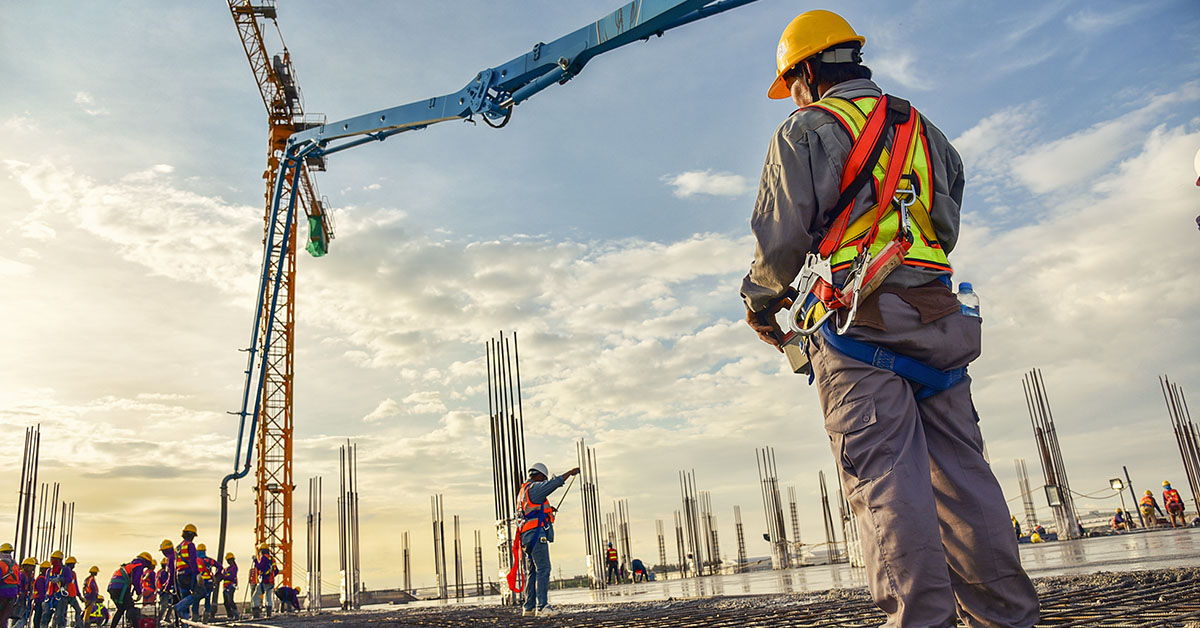The concrete pumping contractor has a responsibility to ensure that all staff and/or subcontractors act in ways that do not cause environmental harm through spillage or leakage of concrete. It is the responsibility of the concrete pumping contractor to ensure concrete residue and/or washdown residue from their activities does not contaminate drains or waterways. Clean-up of all equipment, including the receiving hopper, pipelines and hoses, must also be done in a manner that does not contaminate drains or waterways.
Wash-down water produced during clean-up of equipment must be disposed of in a manner that does not and will not contaminate nearby drains, waterways or soil. It is the responsibility of the concrete pumping contractor to manage the disposal of excess concrete and wash-down water generated during the pumping and clean-up operation. Disposal to the sewer system is not permitted without prior consultation with the local sewage authority.
Purpose
Proper management during the pumping of concrete can minimise the risk of any detrimental impact on the environment.Applications
• for concrete pumping contractors working on construction sites• for site managers overseeing concrete-pumping activities
Best management practices
- Where possible, concrete pumping equipment should be set up on the construction site. This reduces the potential of leakages from hoppers, hoses and fittings that could contaminate the stormwater system.
- Ensure adequate protective screens are erected around the pump area to prevent concrete splashing into street gutters or stormwater drains.
- Where possible, ensure the pumping of concrete occurs at a location on the site where any spillage will not contaminate the stormwater system.
- Where a concrete pump is located on a roadway or footpath where excess material could enter the stormwater system, appropriate bunding to trap spilled material should be installed. Portable concrete collection units (plastic or metal trays or receptacles) should be placed under pumping equipment to collect any spilled material during works (see figure 2).
- Hoses, hoppers, wheelbarrows and other equipment must be washed in the site wash-down area after all excess material has been removed by hand.
- Excess and residue concrete from the hopper and line should either be collected and sent back with the delivery truck or placed in the site’s designated concrete
- masonry recycling receptacle.
- To minimise the amount of wash-down water generated, scrape excess concrete residue from the hopper before washing. Do not wash out the hopper directly into the street gutter.
- It is the responsibility of the concrete contractor to properly manage the disposal of wash-down water generated during the cleaning process. Options for collection, treatment and disposal of wash- down water should be discussed with the site manager.
- Wash-down water from the hopper must not contaminate the stormwater system. The wash-down area should be used only for small volumes of wash-down water and is not to be used as a disposal point.
- Mud, soil and stones carried off-site are regarded as pollutants. Therefore, tyres and undercarriages must be clean before vehicles leave the construction site.
- Inspect and maintain the machinery regularly to minimise leaks and drips.
- Pollution controls should be in place before concrete is pumped. The concrete pump contractor should inspect pollution controls to ensure they are adequate, and should liaise with the site manager if there are any problems. •The site or project manager or delegate must maintain vigilance during the work activities to ensure that pollution control procedures are being followed.
- Placing equipment or material where it is likely to pollute the environment may result in on-the-spot fines or prosecution.
Ref: Extracted from the NSW Government’s Environmental Best Management Practice Guideline for Concreting Contractors
